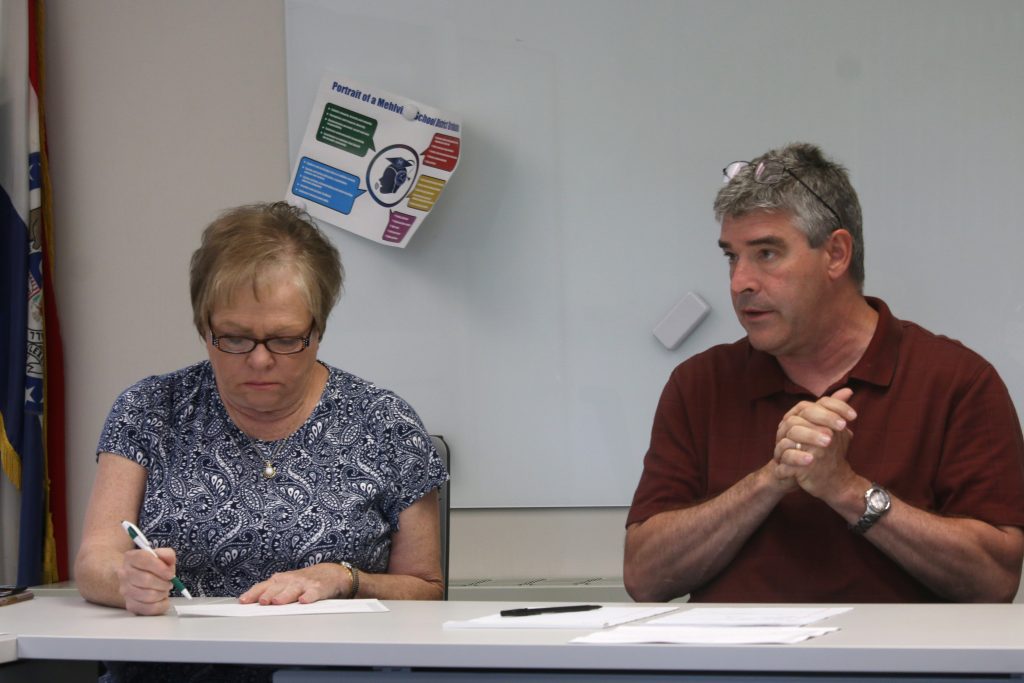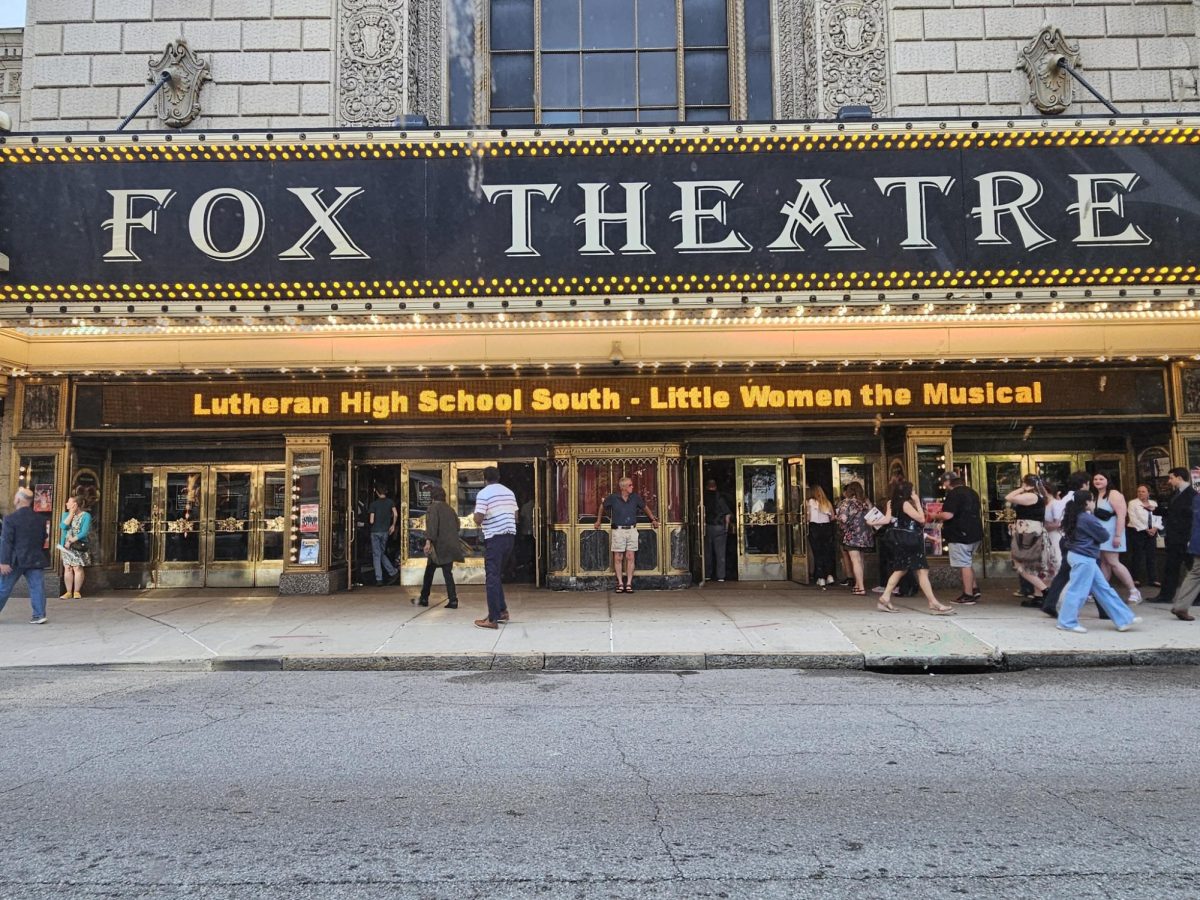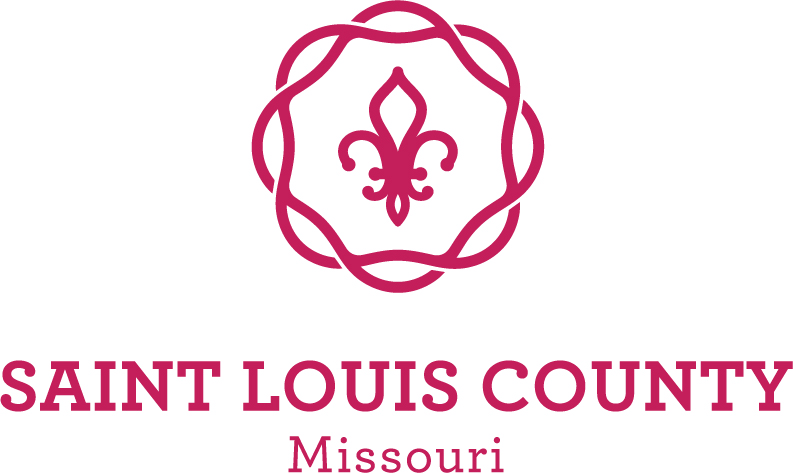The Mehlville Board of Education will consider a “strong, sound” $124 million 2019-2020 budget tonight at the Board of Education Meeting at Mehlville High School, with a June 30 deadline to adopt it under state law.
The board considers the budget tomorrow night — Thursday, June 27 — at the high-school library, 3200 Lemay Ferry Road.
As proposed, the 2019-2020 budget projects total expenditures of $124.4 million with anticipated revenues of $123.8 million. The proposed budget carries a $630,000 deficit. The operating funds, which account for the day-to-day spending in the district, have a surplus of $1 million. Non-operating funds used for debt payments had a $1.67 million deficit due to planned debt payments.
The total revenue for the district is divided between the district’s operating funds and non-operating funds.
The 2018-2019 budget projected total expenditures of $121,383,000 with expected revenues of $121,712,000.
But unlike past years when the district had a deficit in its operating funds, Chief Financial Officer Marshall Crutcher said this year’s deficit is misleading because the capital funds it is spending over revenues have been collected in previous years with a plan to spend them this year, and it is “merely a timing issue of collecting revenue in smooth, even increments.”
Crutcher has been presenting budget updates to the board since January of this year, and said that this year had no significant events that impacted the budget and that “to a large degree, it’s just a continuation” of last year’s budget.
“We’re in a strong financial position. The cash reserve is in the 29-percent area. It looks like our next few years we’re expecting to have good solid cash reserves and paying off COP (certificates of participation) debt over the next couple of years,” said Crutcher. “That’s a strong position to be in. We’re in a nice, sound financial position.”
Some key takeaways for the upcoming school year include an operating surplus of $1.1 million and a 29.5-percent cash reserve, compared to last year’s anticipated $1.6 million surplus to operating funds and 29.3-percent cash reserve.
The revenue for 2019-2020 increases by 1.7 percent, or $2.1 million, compared to historical trends of 1.45 percent. Expenditures increase 2.5 percent or $3.1 million, compared to 2.3 percent in historical trends.
Salaries and benefits account for 72 percent of total expenses and increase by $3.1 million or 3.5 percent. Certified salaries of teachers account for 77 percent of total salaries and certified staff are budgeted for one step, channel changes and a $777,000 salary restructure. Classified staff are budgeted for one step, plus a $190,000 salary restructure. Administrative staff are budgeted for 1.8-percent raises.
Supplies and services account for $19.1 million of total expenditures, a $63,000 decrease from last year. Of the supplies and services expenditures, $152,000 accounts for the early college program ($25,000), election services ($70,000), demographer updates for enrollment projections ($35,000) and the early childhood special education bus lease renewal ($22,000), which is fully reimbursable.
Capital expenditures, accounting for $4.2 million of total expenditures, are down 15.5 percent from last year and include six buses, three facilities vans, a new information-technology firewall and facilities projects like HVAC, roofing, windows, ceilings, elevator upgrades, asphalt, transportation, fencing, bleachers and baseball fields.
As for other expenditures, the health insurance expense is $8.4 million. Health care rates have not changed since 2015 and are budgeted for no change in 2020.
Debt payments total $11.8 million, an $866,000 increase from last year’s $10.9 million.
The district will pay debt on three COPs this year. Four COPs will then remain, with three scheduled to be paid off in 2021 and the last paid off in 2022.
Total budget revenue is up $2.1 million from last year, a 1.7-percent increase. Local tax revenue for 2019-2020 is projected to be $75.2 million, a $1.7 million increase from last year.
The district’s assessed value increased by 15 percent instead of the projected 8 percent, prompting the district to recommend reducing the blended tax rate from $4.11 per $100 of assessed valuation to $3.69 to keep taxpayers paying roughly the same amount of taxes under the Hancock Amendment. The blended tax rate, a combination of residential and commercial tax rates, is not levied.
The inflation rate from the consumer price index, 1.9 percent, is added in to the rollback to help make up the difference in year-on-year revenue from rolling back the tax rate. However, the assessed value is not finalized until September and if the assessed value increases more, tax rates will decrease for net zero revenue impact and vice versa unless the assessed value percentage falls below the CPI.




















